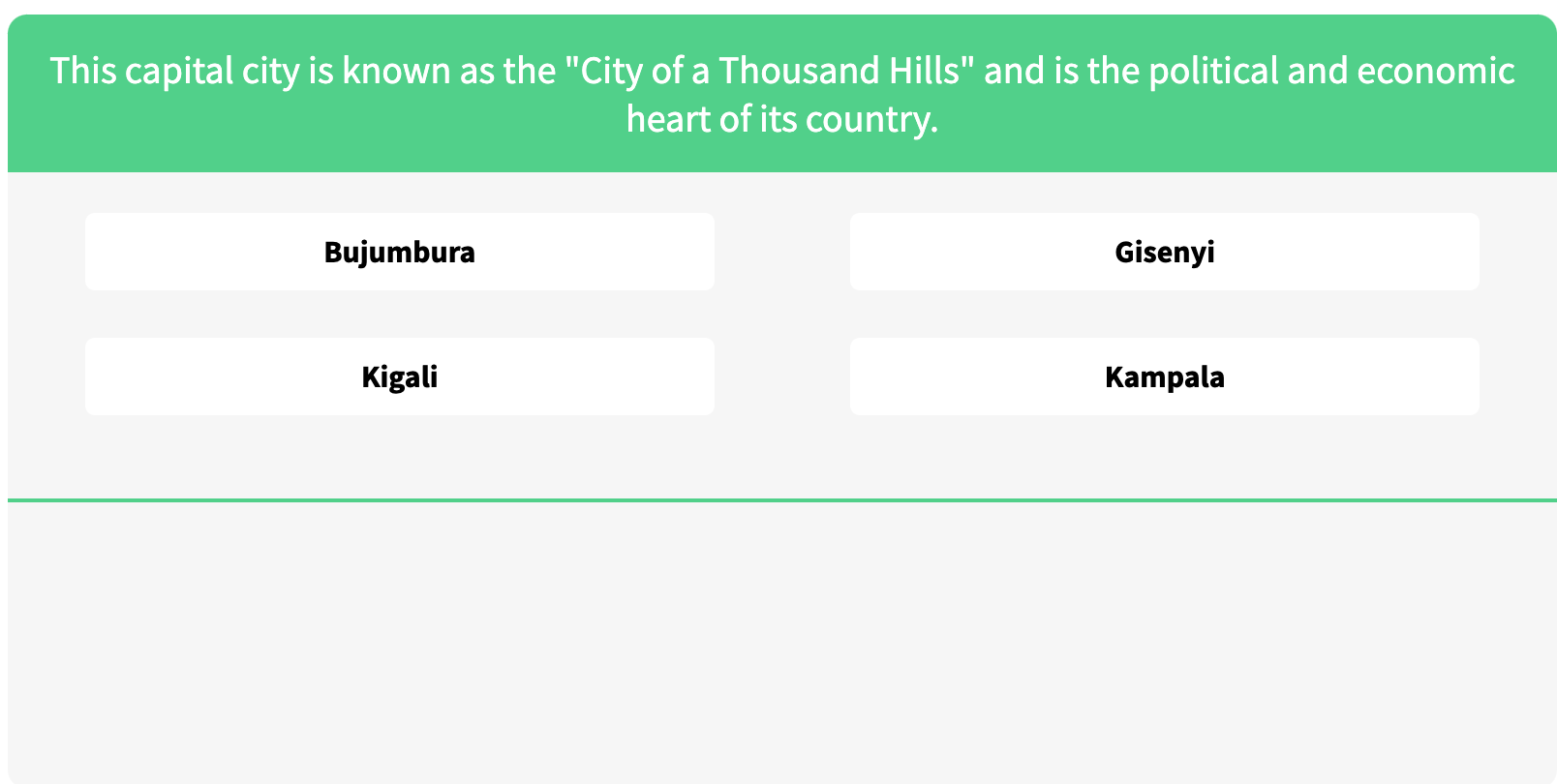In the heart of the Ethiopian mountains, nestled in a region untouched by time, lay the mystical monolithic churches of Lalibela carved out of rock.
These incredible structures were the brainchild of King Lalibela, who in the 12th century, set out to construct a \"New Jerusalem\" after Muslim conquests halted Christian pilgrimages to the Holy Land.
Legend states that King Lalibela was visited by angels, who helped him design and build the churches.
The churches were not constructed conventionally. Monolithic blocks were shaped into doors, windows, columns, and even elaborate floors and roofs.
The richness of their architectural design is complemented by an elaborate system of drainage ditches, trenches, and ceremonial passages.
But what sets these churches apart from others is not just their physical appearance. They are a testament to the devotion and creativity.
African Capital Cities Trivia Challenge!
Test your knowledge about the vibrant continent of Africa with this exciting game of capital cities trivia. How well do you know the capital cities that shape the diverse landscapes and cultures of Africa? Let's find out! 🌍🏛️
Each church is unique in its design and has its religious significance, reflecting the deep-rooted Orthodox Christian tradition of Ethiopia.
Divided into two main groups, the churches stand as a testament to the resilience of a nation.
To the north of the river Jordan: Biete Medhani Alem (House of the Saviour of the World), Biete Mariam (House of Mary), Biete Maskal (House of the Cross), Biete Denagel (House of Virgins), Biete Golgotha Mikael (House of Golgotha Mikael) embody the spirit of devotion and sacredness.
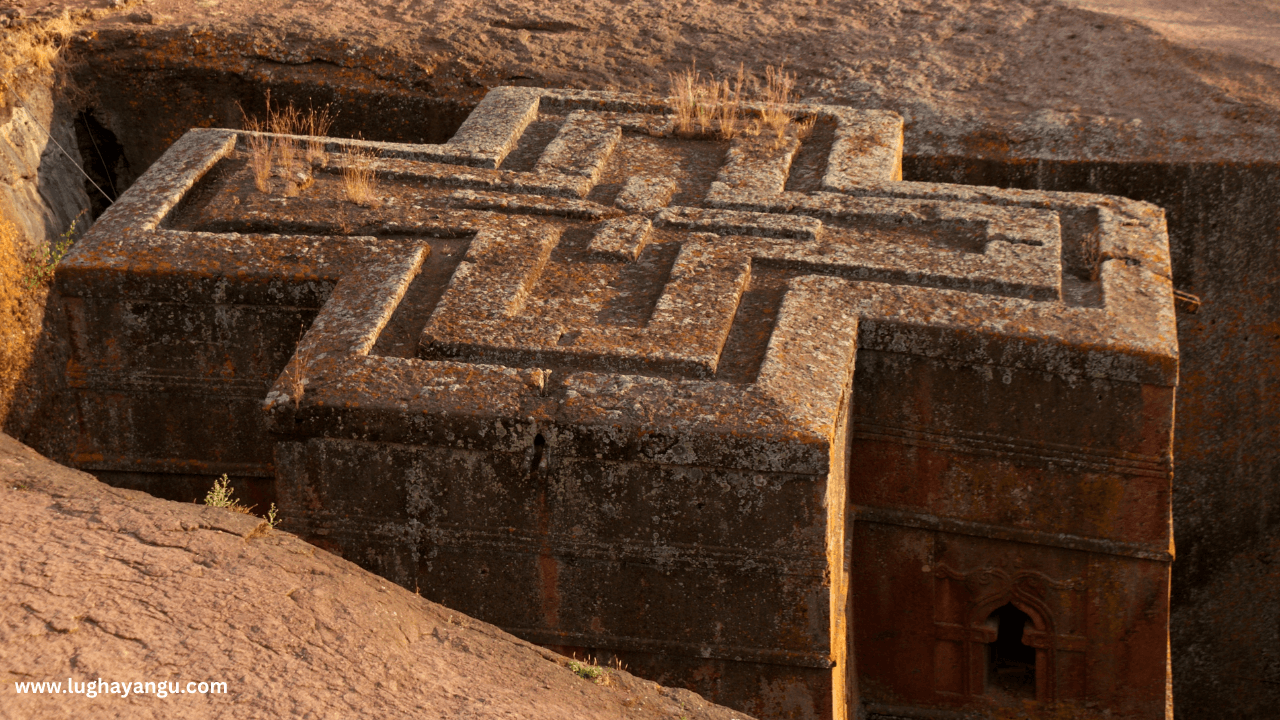
To the south of the river, Biete Amanuel (House of Emmanuel), Biete Qeddus Mercoreus (House of St. Mercoreos), Biete Abba Libanos (House of Abbot Libanos), Biete Gabriel Raphael (House of Gabriel Raphael) and Biete Lehem (House of Holy Bread) continue the legacy of faith.
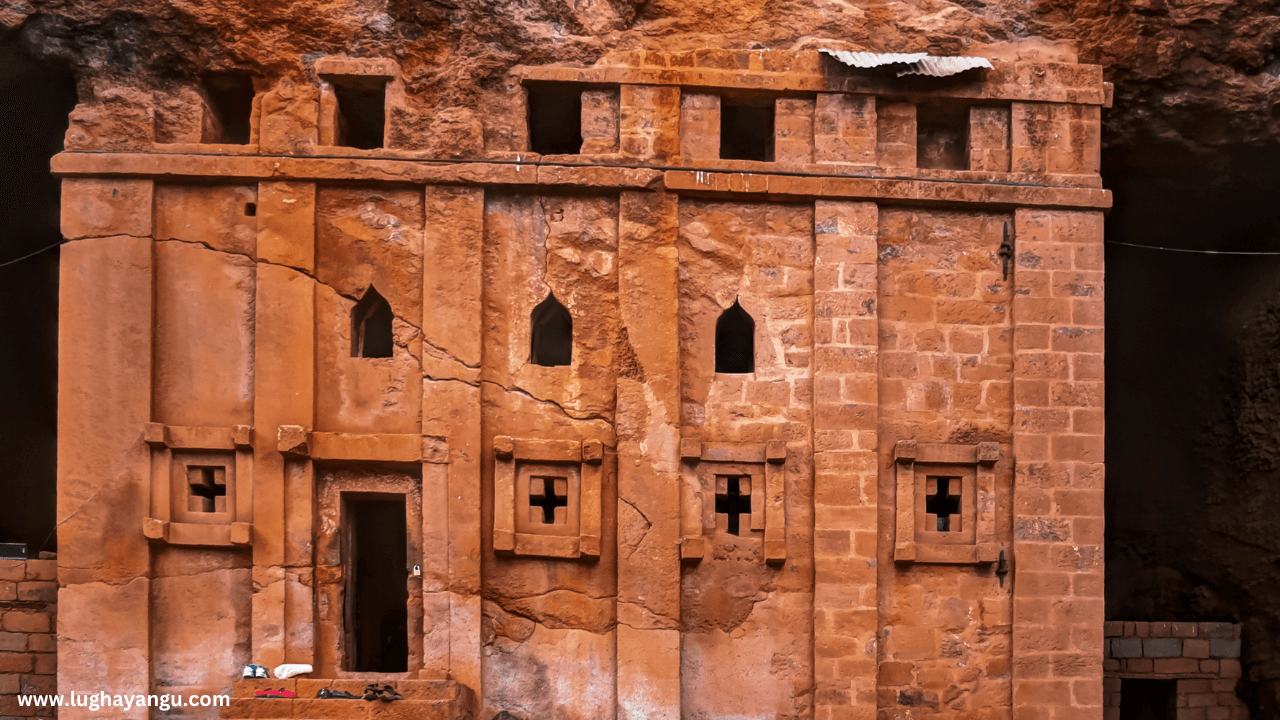
The eleventh church, Biete Ghiorgis (House of St. George), stands in splendid isolation but is connected to the others by a network of trenches.
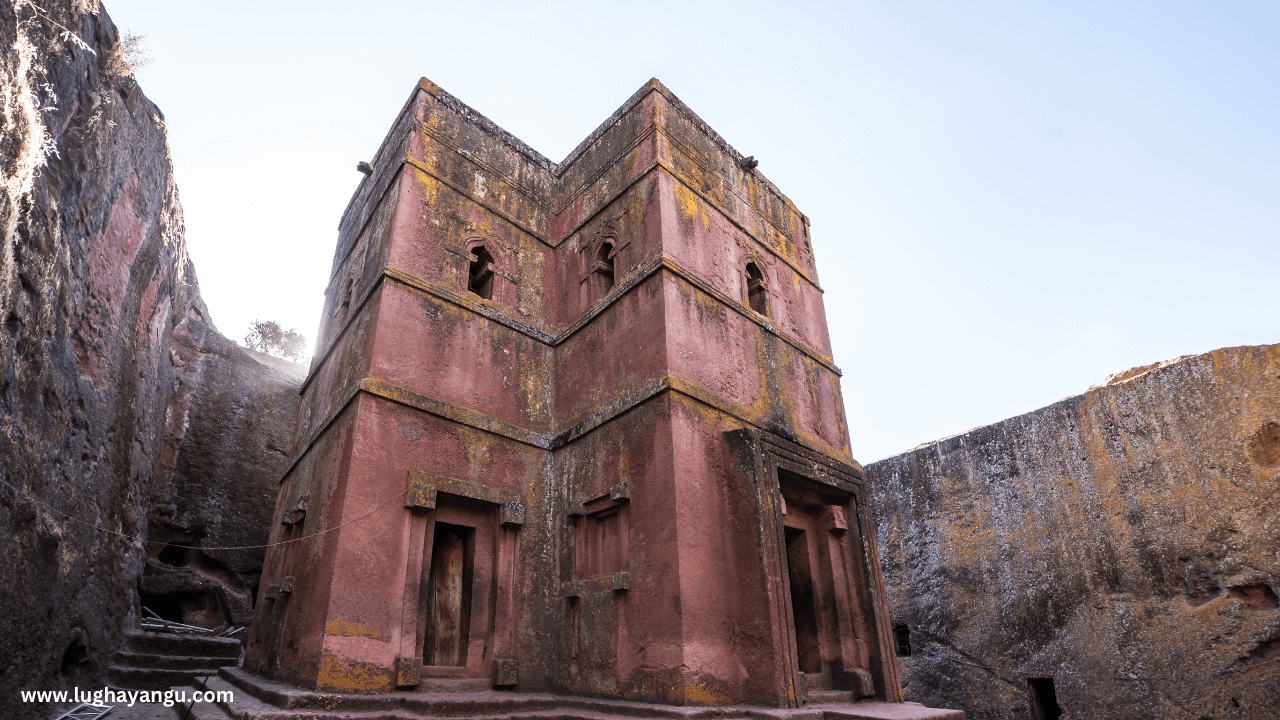
Among them, Biete Medhani Alem stands as the crown jewel, boasting five awe-inspiring aisles and claiming the title of the largest monolithic church in the world.
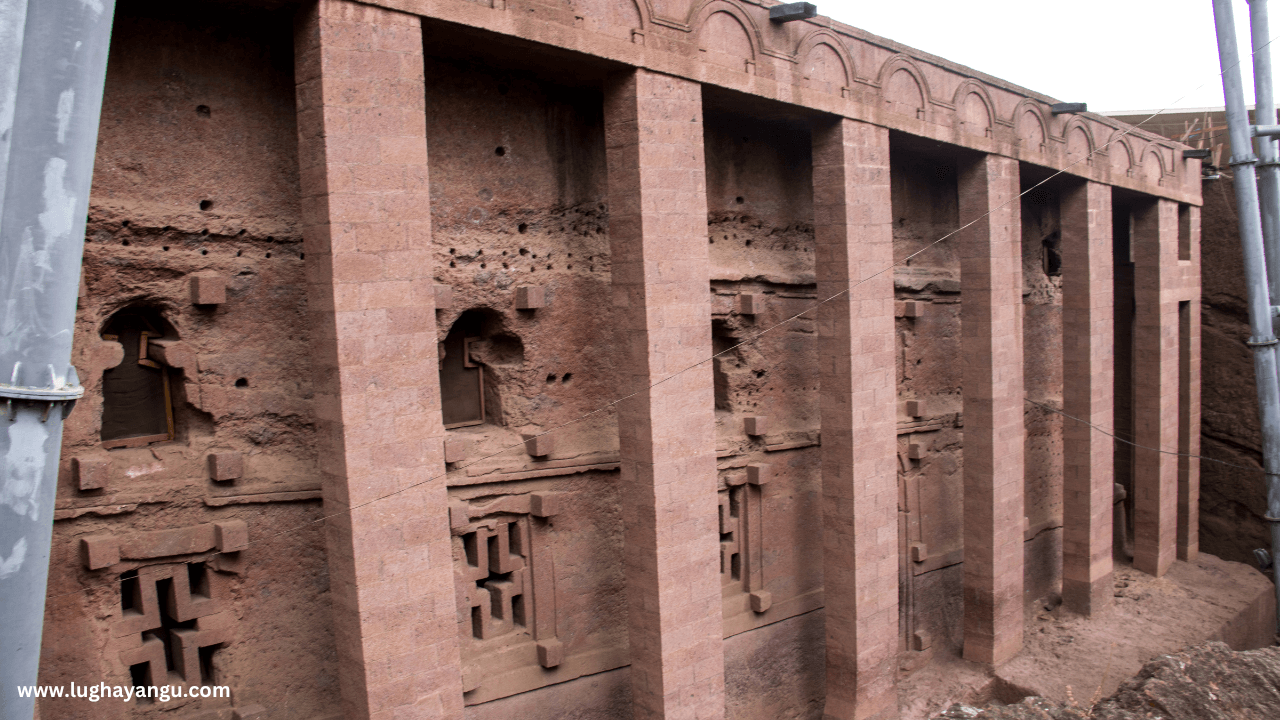
Adjacent to the churches, the village of Lalibela hums with life. Round, two-story houses known as Lasta Tukuls, built with local red stone, dot the landscape.
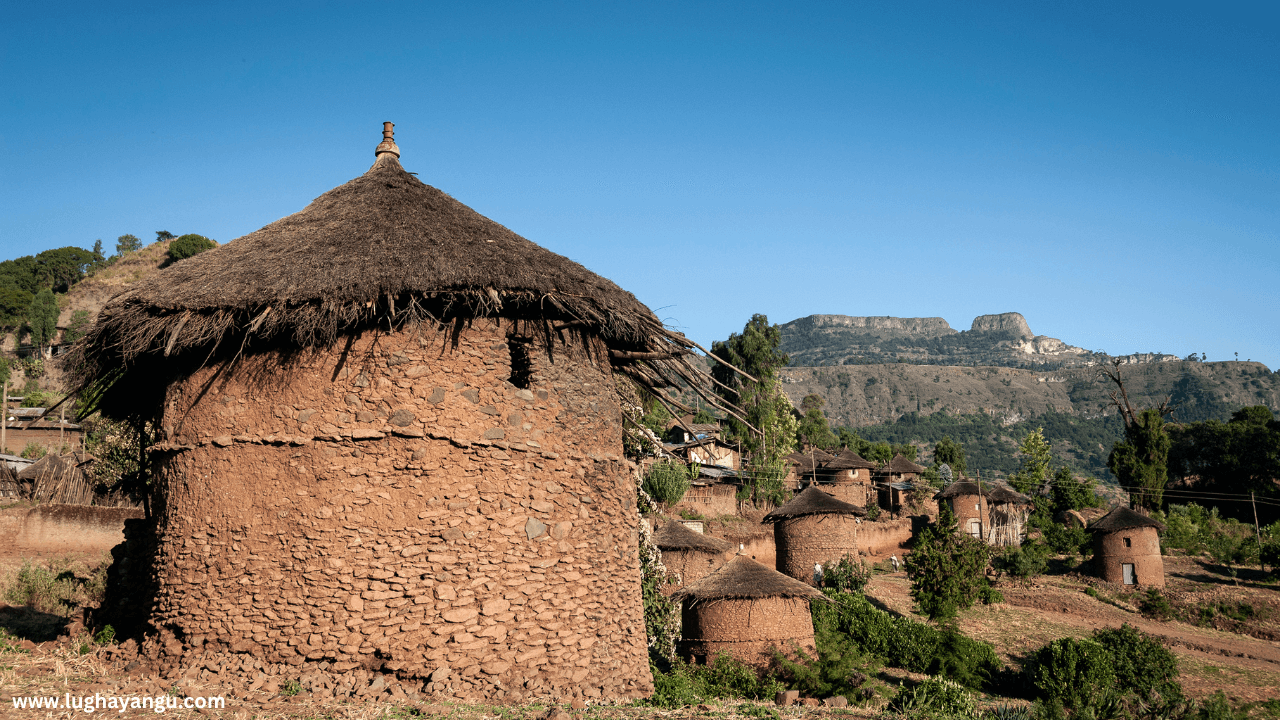
They offer another glimpse into the region's captivating history. Centuries of tradition and spirituality have merged, making Lalibela an enduring pilgrimage site for Coptic Christians since the 12th century.
As you wander through the ancient stone corridors, gazing upon the magnificence that has withstood the test of time, you can't help but be filled with profound astonishment. The monolithic churches of Lalibela are a living testament to faith, devotion, and human ingenuity.
Fun Fact
The Ethiopian Calendar 7 Years Behind. In contrast to the regular calendar, the Ethiopian one has 13 months. 12 months have 30 days each, and the 13th month has 5 days in a typical year and 6 days in a leap year.
Language of the Week
Yom, also known as Pilapila/Kiliŋa/Kilir or Kpila, is a language spoken in Djougou town of Benin by the Yom people.
The language has four dialects: Pila, Tangba, Tangerem and Taneka, and approximately 350,000 native speakers.
Language learning Tip
Practice regularly: Consistency is the key when learning a language. Set aside dedicated time for practice each day, even if it's just 15-30 minutes. Regular practice will help you retain what you've learned and improve steadily.
Whenever you need translation for any African language, help is available here.
Remember, Døø wøk adhienga teek (The beer is difficult to strain) - Anyuak Proverb.
Till next time.
Mike.
Join the Lughayangu Community!

